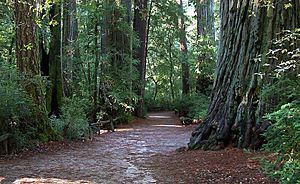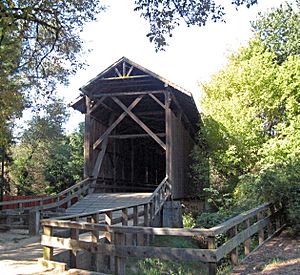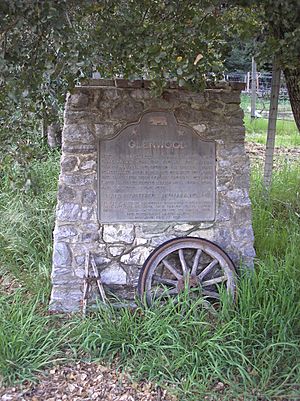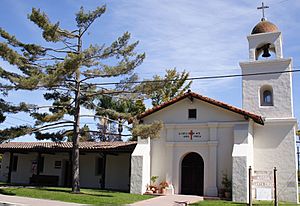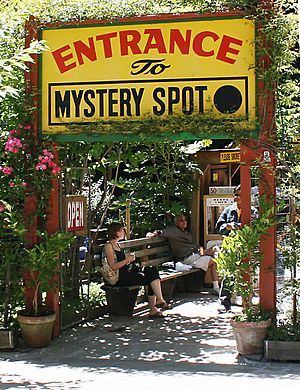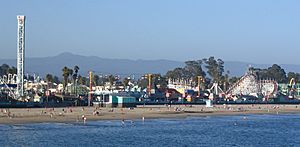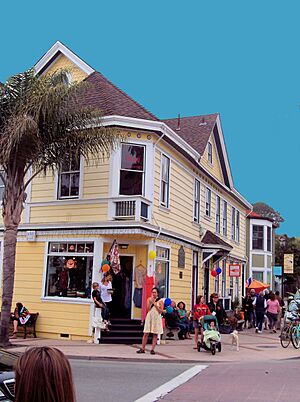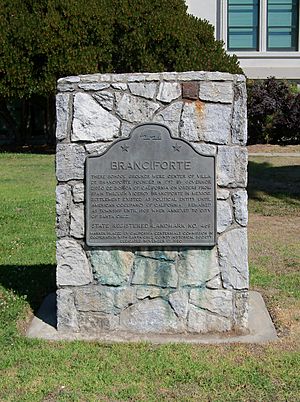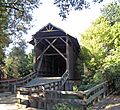California Historical Landmarks in Santa Cruz County facts for kids
Welcome to Santa Cruz County, California! This amazing area is full of history, and many of its special places are called California Historical Landmarks. These landmarks are like time capsules, showing us important moments and stories from California's past. They help us learn about the people, events, and natural wonders that shaped this beautiful region. Let's explore some of these cool historical spots!
Contents
Exploring Santa Cruz County's Landmarks
Big Basin Redwoods State Park
Imagine walking among giant trees that have stood for thousands of years! That's what you'll find at Big Basin Redwoods State Park. Located near Boulder Creek, this park is California's oldest state park, established in 1902. It protects magnificent old-growth Coast Redwood forests. These towering trees are some of the tallest living things on Earth, making the park a truly awe-inspiring place to visit and connect with nature.
Castro Adobe
The Castro Adobe is a historic building located at 184 Old Adobe Road in Watsonville. This adobe house was built in the 1840s by Juan Jose Castro. It's a great example of early California architecture and shows how people lived during the Mexican rancho era. The adobe is also listed on the National Register of Historic Places, which means it's recognized as a very important site in American history.
Felton Covered Bridge
Near Felton, you can find the charming Felton Covered Bridge. This wooden bridge, built in 1892, crosses the San Lorenzo River. It's one of the tallest covered bridges in the United States and was once a key part of the local transportation system. Walking through it feels like stepping back in time to an era when these unique bridges were common. It's a beautiful spot for photos and a reminder of old-fashioned engineering.
Glenwood
The area known as Glenwood is located at 4171 Glenwood Drive in Scotts Valley. This spot was once a bustling stagecoach stop and a small town. It played an important role in the early days of travel and trade in Santa Cruz County. Today, it stands as a historical landmark, reminding us of the journeys and settlements that shaped the region.
Mission Santa Cruz
In the heart of Santa Cruz city, you'll find Mission Santa Cruz at Plaza Park. This mission was founded in 1791, making it the twelfth of the 21 California missions. The original mission played a big part in the early history of California, serving as a center for religion, agriculture, and community life. While the original building is gone, a beautiful replica stands today, helping us remember its important past. It's also on the National Register of Historic Places.
Mystery Spot
Get ready for some mind-bending fun at the Mystery Spot! Located at 465 Mystery Spot Road in Santa Cruz, this unique attraction opened in 1939. It's famous for its strange gravitational anomalies, where water seems to flow uphill and people appear to lean at impossible angles. While it's a fun tourist spot, it's also recognized as a historical landmark, showing its long-standing popularity and unique place in local culture.
Santa Cruz Beach Boardwalk
For over 100 years, the Santa Cruz Beach Boardwalk has been a favorite spot for fun and excitement! Located at 400 Beach Street in Santa Cruz, it's California's oldest amusement park and one of the last seaside amusement parks on the West Coast. With its classic rides, arcade games, and delicious food, the Boardwalk offers a timeless experience. It's a landmark of entertainment and a beloved part of Santa Cruz history.
Superintendent's Office
In Capitola, at 201 Monterey Avenue, stands the historic Superintendent's Office. This building was once part of the operations for the Santa Cruz-Watsonville Railroad. It played a role in the development of transportation and industry in the area. The building represents an important piece of Capitola's past and its connection to the region's growth.
Villa de Branciforte
The site of Villa de Branciforte is located at Water and Branciforte in Santa Cruz. This was one of only three civilian "villas" or towns established by the Spanish in California. Founded in 1797, it was meant to be a farming community. While it didn't grow as planned, its establishment is an important part of California's colonial history and shows early attempts at settlement beyond missions and presidios.
Images for kids


